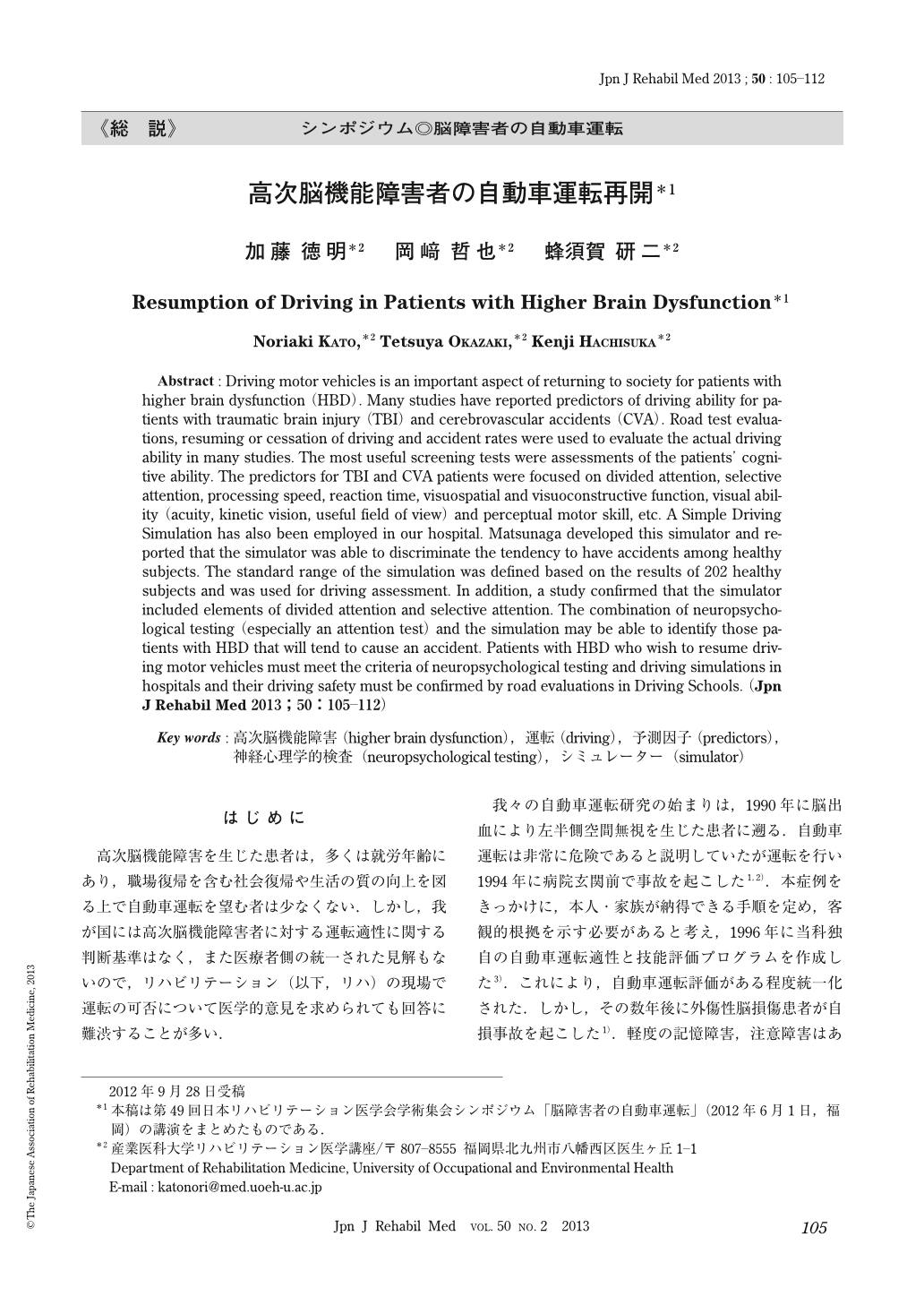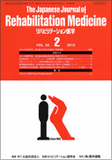Japanese
English
- 販売していません
- Abstract 文献概要
- 1ページ目 Look Inside
- 参考文献 Reference
はじめに
高次脳機能障害を生じた患者は,多くは就労年齢にあり,職場復帰を含む社会復帰や生活の質の向上を図る上で自動車運転を望む者は少なくない.しかし,我が国には高次脳機能障害者に対する運転適性に関する判断基準はなく,また医療者側の統一された見解もないので,リハビリテーション(以下,リハ)の現場で運転の可否について医学的意見を求められても回答に難渋することが多い.
我々の自動車運転研究の始まりは,1990年に脳出血により左半側空間無視を生じた患者に遡る.自動車運転は非常に危険であると説明していたが運転を行い1994年に病院玄関前で事故を起こした1,2).本症例をきっかけに,本人・家族が納得できる手順を定め,客観的根拠を示す必要があると考え,1996年に当科独自の自動車運転適性と技能評価プログラムを作成した3).これにより,自動車運転評価がある程度統一化された.しかし,その数年後に外傷性脳損傷患者が自損事故を起こした1).軽度の記憶障害,注意障害はあるものの,教習所でのシミュレーションや実車教習を経て,1年間母親が同乗する試運転まで実施した患者であったが事故は防げなかった.これらの経緯から,高次脳機能障害者の自動車運転再開を医療関係者が神経心理学的検査を適切に実施し路上評価を含めて総合的に判断するために,学際的な臨床研究を開始する必要があると考えた.そのためには,運転適性に関する報告をまとめ,適性を予測できる信頼性・妥当性の高い評価・因子を知る必要がある.
海外の自動車運転に関する研究は,本邦で言う行政的な高次脳機能障害者に対象を絞った研究は少なく,外傷性脳損傷(traumatic brain injury:TBI)や脳血管障害(cerebrovascular accident:CVA)のように疾患別に運転適性を検討した研究が多い.今回,はじめに脳障害者の自動車運転適性予測に関する研究を概説する.次に高次脳機能障害の運転再開を判断する上で欠かせない神経心理学的検査を中心に,医療機関内で実施・判断でき運転能力を予測・反映する因子について紹介する.最後に,我が国での報告,当院での取り組みを紹介し,高次脳機能障害者の自動車運転再開についてまとめる.
Abstract : Driving motor vehicles is an important aspect of returning to society for patients with higher brain dysfunction (HBD). Many studies have reported predictors of driving ability for patients with traumatic brain injury (TBI) and cerebrovascular accidents (CVA). Road test evaluations, resuming or cessation of driving and accident rates were used to evaluate the actual driving ability in many studies. The most useful screening tests were assessments of the patients' cognitive ability. The predictors for TBI and CVA patients were focused on divided attention, selective attention, processing speed, reaction time, visuospatial and visuoconstructive function, visual ability (acuity, kinetic vision, useful field of view) and perceptual motor skill, etc. A Simple Driving Simulation has also been employed in our hospital. Matsunaga developed this simulator and reported that the simulator was able to discriminate the tendency to have accidents among healthy subjects. The standard range of the simulation was defined based on the results of 202 healthy subjects and was used for driving assessment. In addition, a study confirmed that the simulator included elements of divided attention and selective attention. The combination of neuropsychological testing (especially an attention test) and the simulation may be able to identify those patients with HBD that will tend to cause an accident. Patients with HBD who wish to resume driving motor vehicles must meet the criteria of neuropsychological testing and driving simulations in hospitals and their driving safety must be confirmed by road evaluations in Driving Schools.

Copyright © 2013, The Japanese Association of Rehabilitation Medicine. All rights reserved.


